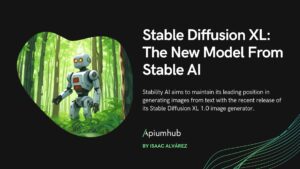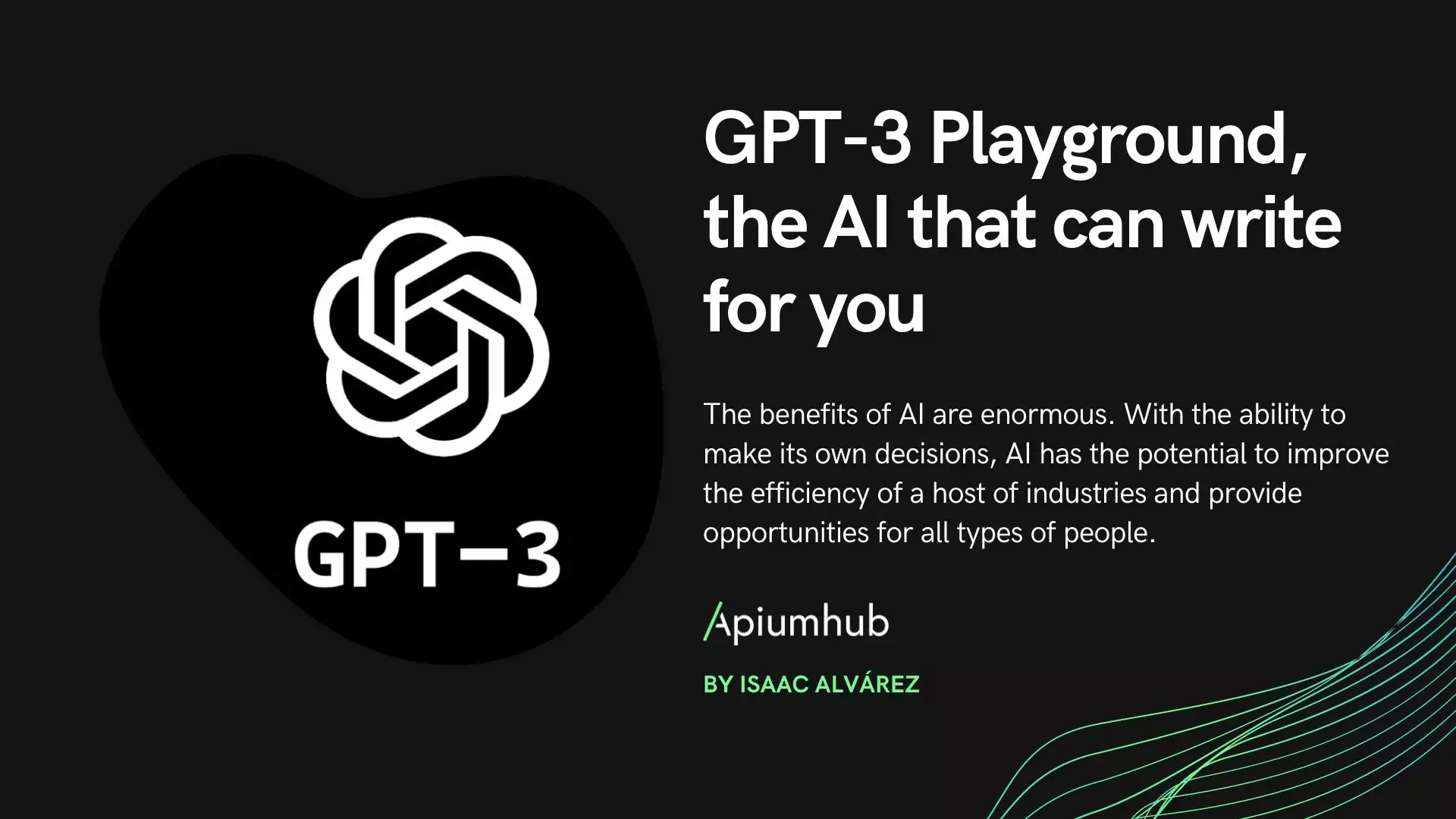Table of Contents
Introduction
In the dynamic scenario that encompasses the application of artificial intelligence in image generation, Leonardo AI is progressively emerging as a prominent alternative, challenging the position previously established by Midjourney.
In this article, we will examine the evolution of Leonardo AI, detailing how it has managed to establish itself as a solid option in the world of artificial intelligence dedicated to image generation. From its attractive free plan to its model training capabilities and its emphasis on visual excellence.
Each aspect will be broken down to reveal Leonardo AI’s position as a viable and compelling choice compared to the renowned Midjourney.
What is Leonardo AI?
In our previous article, we revealed the connection between DALL-E and the surrealist painter Dalí. In this case, we find Leonardo AI referencing the art historical figure Leonardo da Vinci. Both are image generators based on AI models, but Leonardo AI’s focus is on strengthening creativity and increasing control by creators.
The platform’s developers claim that it allows the adaptation of models according to the individual needs of each user. They have concentrated their efforts on addressing common problems in image generation using artificial intelligence, such as degradation, and on developing tools that improve quality intuitively and organically, such as graining.
Leonardo AI has been conceived by a team of developers and graphic designers, seeking to provide artists with an easy and accessible solution for artistic creation through AI. Its main goal is to provide users with the ability to create high-quality works in various styles and themes.
This AI has been trained like many others, as we have explained in previous articles about MidJourney or DALL-E, these AI models are fed and trained with millions of images and employ complex algorithms to generate new images based on existing text or images.
For more information about Leonardo and the use of its API, visit this link.

Advantages over MidJourney
One of the main strengths of Leonardo AI lies in its free plan. It is similar to Dalle, which, unlike Midjourney, allows a specific amount of image generation at no cost. In addition, Leonardo AI’s most expensive plan is around $50 compared to MidJourney’s $120.
Another advantage of Leonardo AI is its user-friendly platform. Its interface is more intuitive compared to a Discord bot solution with Midjourney, offering a friendlier experience for users.
The final customization of the images generated by Leonardo reaches a higher degree, something remarkable if you are looking to refine your idea to the maximum.
Finally, the biggest advantage that Leonardo has over Midjourney is the training of customized models. The platform indeed has several ready-to-use models (such as the one we will explain in the next point of this article), adapted to different styles, but the good thing about this platform is that it also offers the possibility of training an original model with a set of data that you provide as you use it.
How to use Leonardo AI
To start using Leonardo AI, we will have to go to their website and create an account by clicking on the Create an Account button.
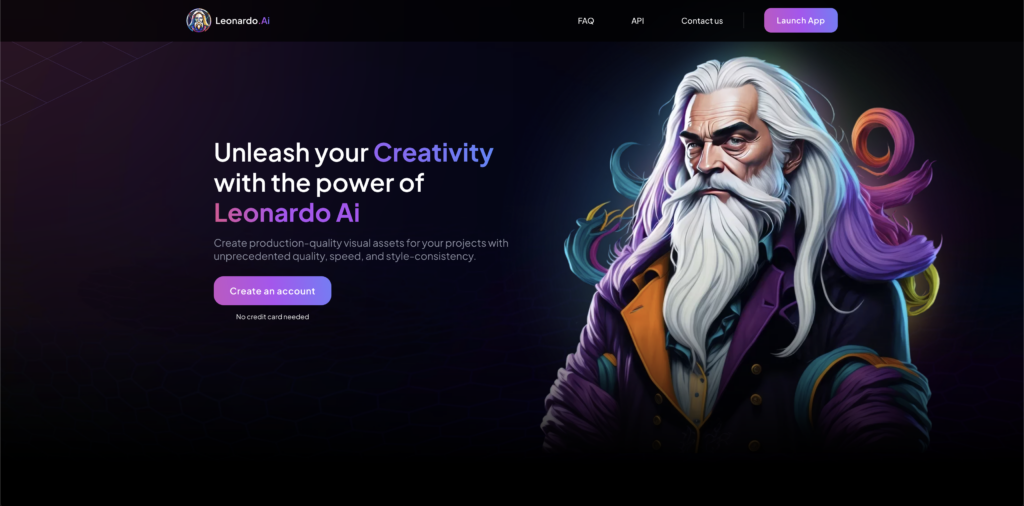
We can create an account in multiple ways. The one we have chosen is with Google. Once we have created our account, a small questionnaire will appear asking us about our interests and what we want to use its artificial intelligence for.
After this process, we will have access to Leonardo’s image generation platform.

As we have explained before, Leonardo has quite a lot of functionalities so in this article we will focus on how to use the trained models in the first section called Featured Models. For this example, we will use the 3D Animation Style model. Once you click on it, you will see the main features of this model, a brief description, and several examples of images generated by the community with the selected model.
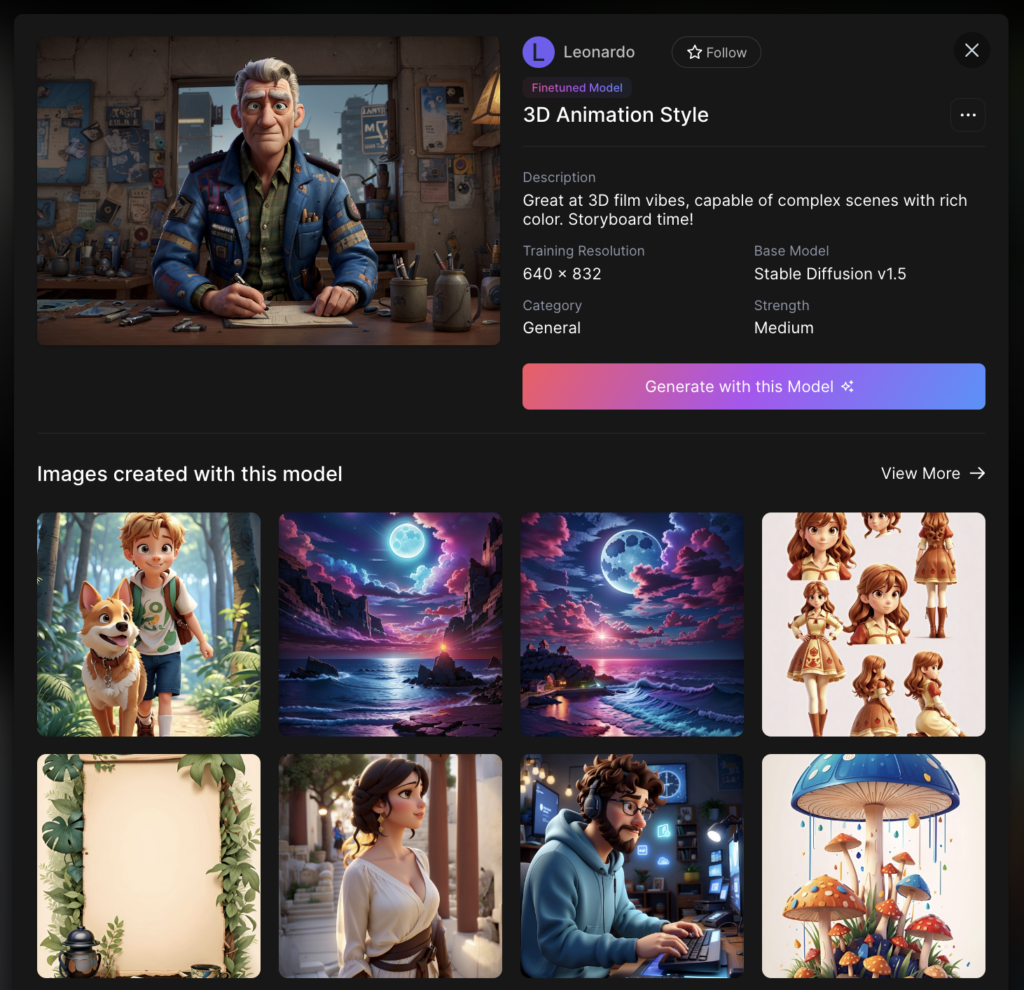
We are now in the image generation screen of Leonardo. We are going to make use of another feature of Leonardo, the generation of prompts for our ideas. To do this, let’s go to the third tab called Prompt Generation, and type in a brief idea about what we want to generate. We will receive up to four prompts about what we have entered and we can select any of them to generate our image by clicking Generate, or if we prefer, we can edit any of the prompts before generating the image.
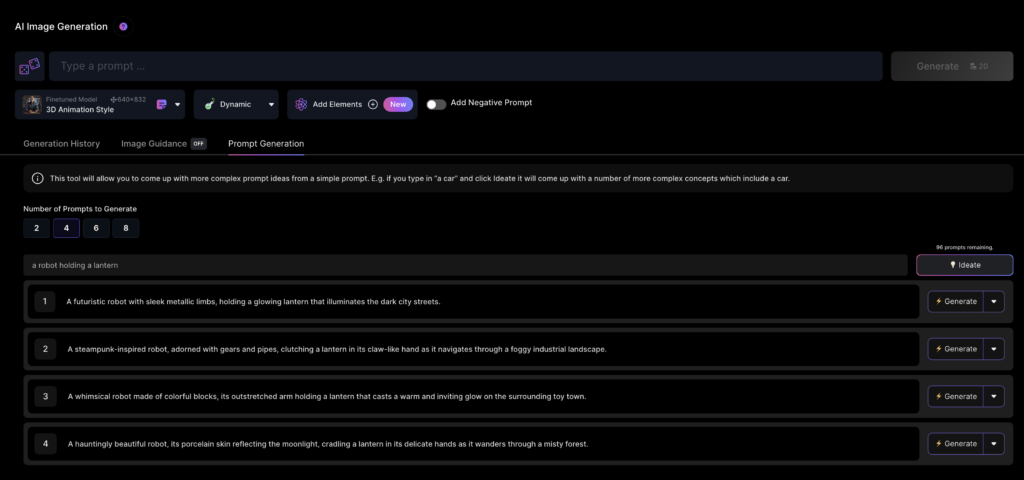
Leonardo will start generating images based on our prompt and after a few seconds, we will get our result.
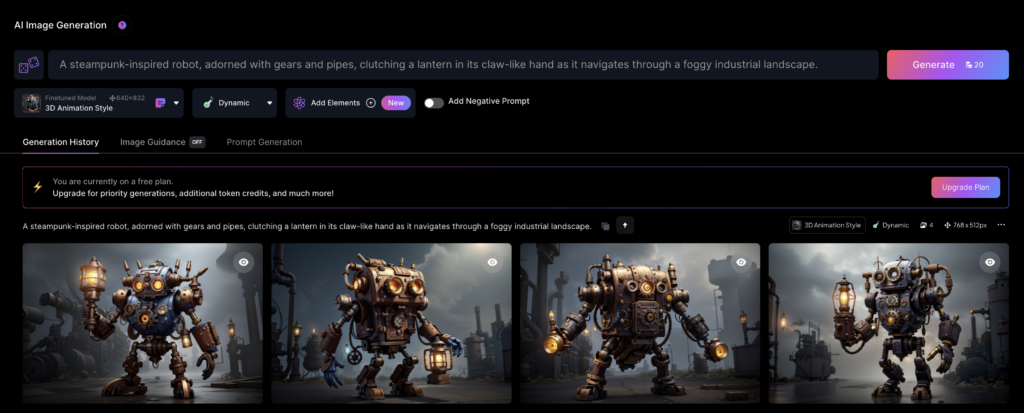
Finally, if we would like to modify the number of images that we generate, the dimensions and several characteristics of the model, and the generations that we obtain, on the left of the section where we obtained the images we will be able to do it. In addition, if we hover the cursor over any of the images we can edit the image by applying filters, crop the image, add text, etc.
How much does it cost?
The service has four plans, including a free access plan. The payment alternatives vary between US$ 10 and US$ 48 per month, with discounts for annual payments.
The main difference between these plans lies in the number of generations available monthly. In the free plan, the limit is set at 150 images per day, exceeding 4,000 generations per month.
The free version shows notable limitations compared to the paid options. A maximum of approximately 1,000 per month is allowed, in contrast to the 12,000 offered in the more expensive plan.
For personal use, the free plan is an excellent choice. However, for professional use, paid plans are preferable, as they offer advantages such as priority in the generation queue and the ability to create copyrighted images (the generations in the free plan are publicly available).
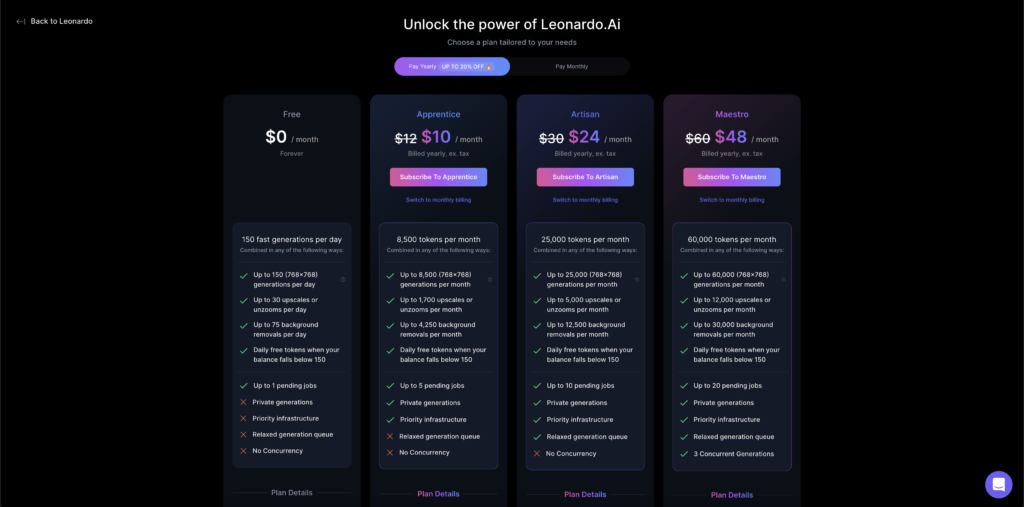
Conclusion
In conclusion, the Leonardo AI and Midjourney platforms, in the field of imaging, reveal a fascinating landscape of innovation and competition.
As Leonardo AI breaks through, defying expectations and establishing itself as a solid option, the dynamics of the field are undergoing a remarkable transformation. Leonardo offers distinct strengths, from free plans to model training capabilities, highlighting the diversity of options for visual creators.
Above all, the functionality to train one’s own model opens the door for artists to get their work done much faster and get a foundation for their art more accurately day after day based on their training.
As these platforms evolve, the future of AI image generation looms as a horizon full of exciting possibilities and unexplored prospects.
Author
-

I consider myself a proactive, responsible, understandable person who works well in a team. In my work I need challenges and be constantly learning. I want to grow personally and professionally.
View all posts

